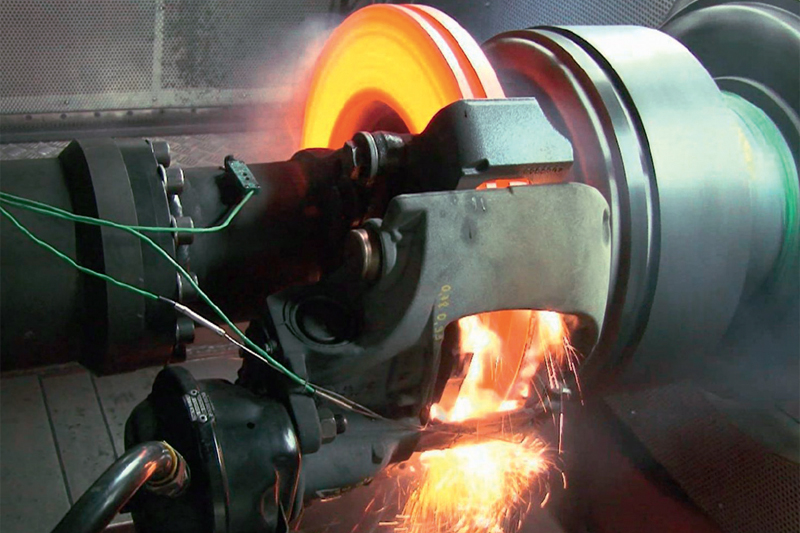
Wheel brakes have to withstand extreme conditions and still perform reliably, even on the world’s most dangerous roads. Test rigs are used at Knorr-Bremse to simulate a whole variety of conditions. Elmar Müller, Manager Testing Department Air Disc Brake at Knorr- Bremse, explains how this works and why it is necessary.
What kind of conditions do brakes have to endure?
Knorr-Bremse wheel brakes must be able to withstand all environmental and operating conditions on the roads. The spectrum ranges from dirt to stone chipping, moisture to corrosion, high and low temperatures to severe vibrations.
As far as possible, the company simulates all these influences under definable and replicable conditions in its test laboratory. To this end, it uses climatic and corrosion chambers to expose its “test subjects” to severe temperature changes, for example, or aggressive substances.
The company uses vibration test rigs that moves its systems in all three dimensions to produce real loads, just as they occur on rough roads. It also uses inertia dynamometers to push the brakes to their thermal performance limits. The work in the lab is complemented by field tests at Knorr- Bremse and at its customers’ premises, in which the prototypes are exposed to a variety of everyday operating conditions.
What are the critical factors?
Vibration is certainly one of the most critical and most spectacular factors. When driving over railway tracks, potholes, or concrete joints, we have measured g-force acceleration of 25 g to 30 g. For comparison, even the “worst” roller coasters produce gforces of only four or 4.5 g.
Any more would be life-threatening for riders of a roller coaster. When it comes to brakes, these forces are a source of stress. They particularly pose a challenge to movable parts like the pads, the complex wear adjuster and the caliper guidance system. Aside from vibration, corrosion and its influence on the smooth functioning of all brake components is a critical factor.
What about the red-hot brake discs?
The fact that the discs heat up to over 900°C after a steep downhill drive is not particularly dramatic in itself. However, at high temperatures, properties such as the friction coefficient and wear behaviour of the brake pads change and the brake components expand noticeably.
All this must be taken into account when designing and constructing the wheel brake and its components. If, in the worst case, the brake cools down as the vehicle remains stationary after a long downhill drive and the components therefore contract, naturally we have to ensure that the brake will still function properly. That’s why Knorr-Bremse also tests precisely such cases, for example by parking the vehicle “hot” and fully loaded on an 18% incline, letting it cool down and then towing it away to determine the residual holding force.
Do iced-up discs reduce the braking force even more?
In a system that converts kinetic energy into heat and builds up clamping forces of over 20 tonnes, ice is not the main cause for concern. Very little ice will remain after the first brake application. At very low temperatures, however, certain effects come into play that can affect the agility of the brake.
As lubricants become more viscous, the brake reacts more sluggishly, and this effect must not be allowed to overly restrict the braking dynamics in ABS control mode. However, Knorr-Bremse’s low-temperature tests in the laboratory and in Arjeplog, Sweden, shows that it has this phenomenon well under control.

What are the worst environmental conditions for a braking system?
What usually makes dramatic environmental conditions even more challenging is when they are combined with a tough operational profile. For example, in the company’s field test applications, it has milk collection trucks that place high demands on the brakes due to their operational profile, the heavy vehicle load and, of course, their difficult routes.
Operating in multiple shifts, seven days a week, with very frequent brake applications, sometimes heavily loaded – all this can lead to continuously high operating temperatures of around 400°C, while driving on roads that may only be used for farm access. When all these factors come together, it can considerably reduce the lifetime of the friction pairing, so the vehicle service life is essentially running in fast-forward.








